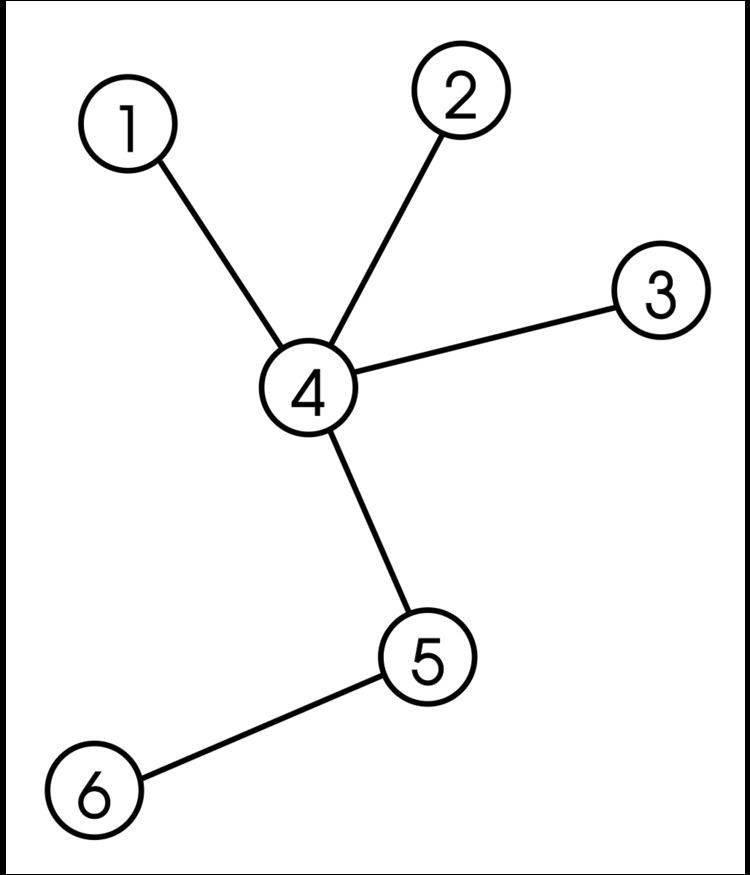 | ||
In combinatorial mathematics, the Prüfer sequence (also Prüfer code or Prüfer numbers) of a labeled tree is a unique sequence associated with the tree. The sequence for a tree on n vertices has length n − 2, and can be generated by a simple iterative algorithm. Prüfer sequences were first used by Heinz Prüfer to prove Cayley's formula in 1918.
Contents
Algorithm to convert a tree into a Prüfer sequence
One can generate a labeled tree's Prüfer sequence by iteratively removing vertices from the tree until only two vertices remain. Specifically, consider a labeled tree T with vertices {1, 2, ..., n}. At step i, remove the leaf with the smallest label and set the ith element of the Prüfer sequence to be the label of this leaf's neighbour.
The Prüfer sequence of a labeled tree is unique and has length n − 2.
Example
Consider the above algorithm run on the tree shown to the right. Initially, vertex 1 is the leaf with the smallest label, so it is removed first and 4 is put in the Prüfer sequence. Vertices 2 and 3 are removed next, so 4 is added twice more. Vertex 4 is now a leaf and has the smallest label, so it is removed and we append 5 to the sequence. We are left with only two vertices, so we stop. The tree's sequence is {4,4,4,5}.
Algorithm to convert a Prüfer sequence into a tree
Let {a[1], a[2], ..., a[n]} be a Prüfer sequence:
The tree will have n+2 nodes, numbered from 1 to n+2. For each node set its degree to the number of times it appears in the sequence plus 1. For instance, in pseudo-code:
Next, for each number in the sequence a[i], find the first (lowest-numbered) node, j, with degree equal to 1, add the edge (j, a[i]) to the tree, and decrement the degrees of j and a[i]. In pseudo-code:
At the end of this loop two nodes with degree 1 will remain (call them u, v). Lastly, add the edge (u,v) to the tree.
Cayley's formula
The Prüfer sequence of a labeled tree on n vertices is a unique sequence of length n − 2 on the labels 1 to n — this much is clear. Somewhat less obvious is the fact that for a given sequence S of length n–2 on the labels 1 to n, there is a unique labeled tree whose Prüfer sequence is S.
The immediate consequence is that Prüfer sequences provide a bijection between the set of labeled trees on n vertices and the set of sequences of length n–2 on the labels 1 to n. The latter set has size nn−2, so the existence of this bijection proves Cayley's formula, i.e. that there are nn−2 labeled trees on n vertices.
